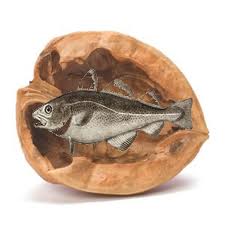Why is cheap tea a threat to your health? For the same reason that tap water is.
In a Nutshell: New British research shows that the tea plant accumulates fluoride as it grows, with mature leaves containing the most fluoride. When tea is harvested, the older leaves are used to produce lower quality, stronger teas such as economy teas. The bud and newer top leaves are used in the higher grade and specialty tea products. It is suggested that an adult consume no more than three mg of fluoride a day. The new study showed that on average, four cups of cheap supermarket tea provided six mg of the substance. Excessive intake of fluoride can cause a variety of health problems including joint pain, muscle weakness, osteoporosis, brittle teeth, kidney problems. Excessive fluoride has even been linked to cancer.
Adapted from Could Cheap Tea Bags Make You Ill? by Fiona Macrae.
Opting for cheap supermarket tea bags over artisan blends could have long-term health consequences, according to new research.
A study has found that cheap tea bags from supermarkets including Asda, Sainsbury’s and Tesco can push a person’s fluoride intake over daily recommended levels and put them at a higher risk of bone and dental disease.
Experts have now called for supermarkets and tea manufacturers to consider stating fluoride concentration as part of the nutritional information found on food packaging.
Levels of fluoride found in 38 tea products were compared by PhD student Laura Chan, Professor Aradhana Mehra and Professor Paul Lynch from the University of Derby.
Using Ion Selective Electrode analysis – which analyses trace elements, such as fluoride, in a liquid – of the dry tea, and of the tea infusions brewed with boiling water for two minutes, the researchers compared the fluoride levels consumed by someone drinking the average intake of four cups or a litre of tea a day.
It is recommended that an adult does not consume more than three to four mg of fluoride per day.
Yet researchers discovered that economy blends of tea contained between 75 per cent and 120 per cent of the recommended daily intake.On average, a litre of cheap supermarket tea contained six mg of fluoride.
They found significant differences in fluoride levels when economy black tea blends from supermarkets Asda, Tesco, Morrisons and Sainsbury’s were compared with branded black tea blends such as PG Tips, Twining’s and Typhoo.
They also found significant differences in fluoride levels between green tea blends including Clipper Organic leaf, Green Twining’s bags; pure blends such as Assam, Dilmah and Ceylon; and Oolong and Pu’er blends from India and Sri Lanka.
Economy black tea blends, such as Asda Smartprice, Tesco Value, Morrisons Value, Sainsbury’s Basics, and Waitrose Essential, were found to have the highest concentration of fluoride – an average of six mg per litre.
Waitrose Essential was significantly lower in fluoride compared to the other economy black blends, however.
Infusions of green tea blends had the next highest concentrations of the substance, followed by branded black blends such as PG Tips, Twining’s and Typhoo, with an average of 3.3 mg per litre, compared to pure blends.
More specialist teas such as oolong and pu’er had the lowest concentrations of fluoride with an average of 0.7 mg per litre.
Excessive intake of fluoride can cause a variety of health problems.
In addition to tea, fluoride can be found in some seafood, fluoride-enriched toothpaste, drinking water in some areas of the country and in processed foods using fluoridated water.
Less seriously dental fluorosis can occur, which causes white and brown spots appear on the enamel of the teeth, and results in an unsightly ‘mottled’ effect.
This can be the first sign that fluoride has poisoned enzymes in the body.
But it can also cause skeletal fluorosis, a crippling disease that causes symptoms including bone and joint pain, muscle weakness and gastrointestinal disorders.
This tends to occur in people who have routinely consumed 10 to 20mg of fluoride per day for 10 to 20 years or 2.5 to five mg per day for at least 40 years. In the most severe cases, the spine becomes completely rigid.
Excessive fluoride consumption has also been linked to osteoporosis.
A higher incidence of kidney stones has also been recorded in areas with high fluoride levels in drinking water.
Research has also linked excessive fluoride exposure to bone cancer in young men. A 1992 study found that osteosarcoma rates were three to seven times higher in fluoridated water areas than non-fluoridated areas.
Ms Chan said: ‘The tea plant, Camellia sinensis, is a fluoride accumulator, with mature leaves accumulating most of the fluoride.
‘When tea is harvested, these older leaves may be used to produce lower quality, stronger teas such as economy teas, whereas the bud and newer top leaves are used in the manufacture of higher grade and specialty tea products.
‘Although fluoride is considered an essential micronutrient for human health, in the prevention of tooth decay and promotion of healthy bone growth, excess fluoride in the diet can have detrimental effects.
Dental fluorosis, the mottling of tooth enamel, and skeletal fluorosis, pain and damage to bones and joints through calcification, can occur.
‘People may be drinking excessive volumes of tea in addition to other dietary sources of fluoride and may not realise these potential health implications.
‘Indeed, there have been cases, in both the UK and the USA, of skeletal fluorosis in individuals who drank more than the average amount of economy tea,’ added Ms Chan.
‘All tea products should be considered as a main source of fluoride in the diet, and we would urge supermarkets and manufacturers of tea to consider stating fluoride concentration as part of the nutritional information found on food packaging,’ added Ms Chan.
The study is published in journal Food Research International
Source: DailyMail.co.uk






